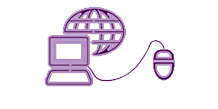Hello friends and welcome back to the blog. I hope that I am finding you well in your genealogical journey! I am sure you are busy with many projects, and find yourself once again scouring and gathering many evidences pertaining to your ancestors’ lives. Amongst these you may find yourself stumbling across maps, or perhaps you have been tactfully avoiding them, taking care to try and unearth your relatives lives through other documents. Today I hope to help demystify maps and allow you to translate the information contained inside of them to further you ancestors’ stories and your families story.
Maps can be intimidating to work with for a variety of reasons, but many times it has to do with understanding where you should be looking. However, despite living in a time where paper maps seem irrelevant and many of us no longer have the ability to constantly practice our map reading skills; I am sure that at the very least most of us have had to use Google maps to get around. We can actually take some of these familiar concepts and skills we use as we Google directions to help us understand which and how we should apply certain skills when looking at historical maps. For one we know that we must type in an address. When it comes to historical maps this too can be a great help, but sometimes locating those addresses on state or town maps can be difficult. Addresses as we know them today are much different and more systematic than they were when our ancestors were alive. Sometimes there can be duplicate town our county names other challenges might include locating the exact street name and number. To overcome this and help you identify where exactly on a town, county, or, state map your ancestor lived I would recommend searching through the Geographic Names Information System or the specific gazetteers for each county/state, local genealogy research guides and city directories might also be helpful. Modernly, Google is usually pretty good at automatically knowing what neighborhood or boundary the address you input resides in. However, when it comes to looking at historical maps as a genealogist you may find yourself having to complete this task more manually. Keep in mind that territories change and this may dictate what jurisdiction your ancestors’ records fall in and where they might be now. In order to figure boundaries out specifically, I would recommend researching the national, territorial, and state boundaries. Some helpful places/websites you could check include university libraries that have access to many older maps, David Rumsey Map Collection, and other state commissioned maps. To figure out what sort of neighborhood your ancestors may have lived in I would recommend consulting a variety of different maps so that you can get a more complete visual. I find that: fire insurance, topographic, military, demographic, and panoramic maps can be very helpful.
More broadly, changing world maps can help us understand the migration patterns of our ancestors. In the wider outlook of your family tree this can help you see why and how your family got to where you reside now. As you look at changing maps from different time periods for the areas in which your family descends you may notice that many times maps change due to specific events, actors, environment, etc. As you see the visual changes, take account of what may be going on at that time in those places as well. These events, actors, and environmental historical changes probably affected the various push and pull factors that prompted your ancestors to emigrate. This could also be a great place to double check your work by looking for personal documents like letters, postcards, journals that might detail your ancestors’ personal thoughts on the going ons that may have prompted their eventual journeys.
There is much that I could say about maps, but I will leave that for another time. Simply, they can be wonderful tools that can help us as genealogists trace family migration both out and within countries. I hope you now feel less intimidated at the idea of utilizing maps in your genealogical research! If you have any further questions on this topic or others that I have covered in past blogs, please see my webinars where I explain things in further depth. If you have a more specific question, please feel free to reach out using the above contact information, located in the top right corner of this same website. Thank you for reading and happy researching!
Winona I Laird “The Genealogy Granny” https://www.genealogyeducationcenter.com



